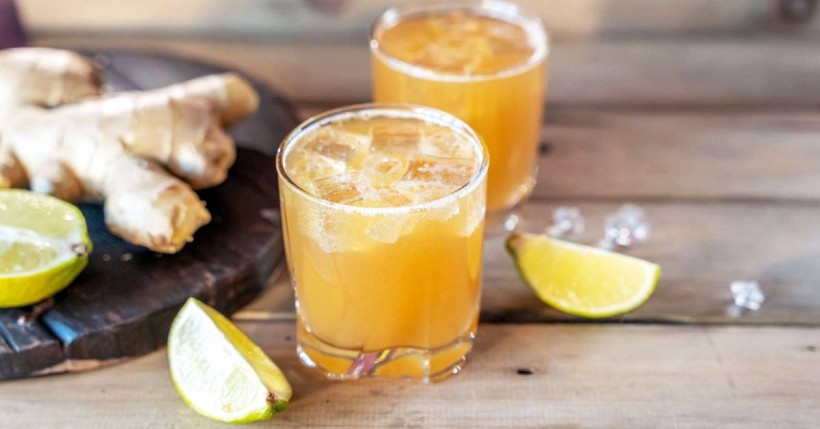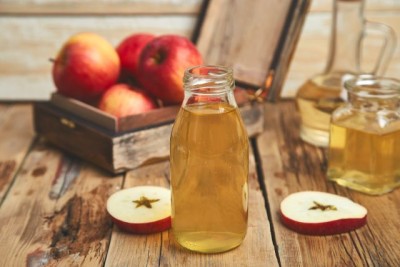5 Health Benefits Of Ginger And How To Make Ginger Ale
Warning: Undefined variable $post in /home/dietofli/public_html/wp-content/plugins/code-snippets/php/snippet-ops.php(584) : eval()'d code on line 3
Warning: Attempt to read property "ID" on null in /home/dietofli/public_html/wp-content/plugins/code-snippets/php/snippet-ops.php(584) : eval()'d code on line 3
The estimated reading time is 9 minutes
Warning: Undefined variable $post in /home/dietofli/public_html/wp-content/plugins/oxygen/component-framework/components/classes/code-block.class.php(115) : eval()'d code on line 3
Warning: Attempt to read property "ID" on null in /home/dietofli/public_html/wp-content/plugins/oxygen/component-framework/components/classes/code-block.class.php(115) : eval()'d code on line 3

Besides being super delicious and adding a characteristic flavour to many dishes, ginger offers a variety of health benefits. Ginger (Zingiber officinale) is a plant belonging to the family Zingiberaceae and it originated in Southeast Asia. The root of this nutritious plant has been used as a spice in cooking and traditional health practices around the world for centuries.
Ginger is an inseparable part of many recipes. You can use it fresh, powdered, dried, or as juice or oil. Ginger has many health benefits, from treating nausea and promoting weight loss to aiding digestion and reducing inflammation.
So, in this article, we’re going to discuss the 5 most common ways consuming ginger can benefit your health as well as what foods can cause inflammation and what foods can help prevent or reduce this condition.
5 Health Benefits Of Ginger
-
It Can Treat Nausea
Consuming ginger can be effective in relieving symptoms of nausea (1).
One study has reported that ginger controls the severity of postoperative nausea and vomiting in patients having to undergo specific types of surgery (2,3).
Nevertheless, ginger seems to be the most effective in treating nausea in pregnancy.
One study tested the effect of ginger on nausea and vomiting in 1278 pregnant women. The results showed that ginger alleviated symptoms of nausea. However, it had minimal effect on vomiting episodes (4).
-
It May Decrease Menstrual Pain
The term dysmenorrhea refers to the severe pain and cramps during your menstrual cycle.
One study has shown that ginger can decrease the severity of these symptoms. 150 women who had dysmenorrhea were included in the study and randomized into three groups. Women in the ginger group were given ginger powder capsules four times per day from the beginning of their menstrual cycle and they had to take them for three days. Women in the other two groups took ibuprofen or mefenamic acid capsules.
The results indicated that the effectiveness of ginger was equivalent to the effectiveness of the other two medicines in reducing pain in women with dysmenorrhea (5).
-
It Helps Treat Indigestion
Feeling discomfort and persistent pain in the stomach are the most common symptoms of indigestion.
Delayed stomach emptying is thought to be the main cause of this condition. One study has reported that consuming ginger can help speed up gastric emptying and provoke contraction of the antrum in healthy people (6).
Then, another study tested the effect of ginger on dyspepsia (indigestion) in 11 people who had this condition. They were asked to ingest ginger capsules or placebo. An hour later, they were asked to eat soup. The results indicated that gastric emptying was faster in participants who ingested capsules containing ginger than in those who were given placebo, 12.3 minutes and 16.1 minutes respectively (7).
In addition, ginger has been used as home remedy for treating diarrhea, bloating, flatulence, constipation, nausea, and gastritis for centuries.
-
It Alleviates Symptoms of Colds and Flu
Many people drink ginger tea to ease symptoms of colds and flu and boost their immune system.
Ginger has anti-viral properties. One study found that fresh ginger was effective in inhibiting the formation of plaque caused by the human respiratory syncytial virus. However, dried ginger didn’t have this effect (8).
So, whenever you have a cold, make sure you include ginger in your diet to help you recover from it.
-
It Helps Fight Inflammation
Studies have shown that ginger has anti-inflammatory and antioxidant properties. It can decrease pain in the muscles after intense physical activity (9,10). It may also slightly reduce symptoms of arthritis.
And here’s one simple recipe which contains ginger:
How To Make Ginger Ale
Ingredients:
- 4 cups of water
- 2 cups of peeled and chopped ginger
- 2 juiced limes
- 1 teaspoon of raw honey
- ½ cup of sparkling water
- Slices of lime for garnish
- A few ice cubes
Preparation:
- First of all, boil the water in a pot. Then, add ginger and lower the heat to a medium-low. Let it boil for 5 minutes.
- Put the pot aside and strain the ginger water thoroughly. Next, add sparkling water and a couple of ice cubes.
- Finally, add lime juice or row honey to make the drink sweeter and serve.
Now, let’s discuss what other foods, in addition to ginger, can help reduce or prevent inflammation-related pain.
Anti-Inflammatory Foods
Consuming anti-inflammatory foods is effective in alleviating symptoms of certain conditions, such as fibromyalgia and psoriatic and rheumatoid arthritis.
For example, one study says that certain compounds, such as omega-3 polyunsaturated fatty acids, flavonoids, curcuminoids, taurine, and the terumbone found in ginger, have anti-inflammatory activity. In addition, correctly consuming minerals plays an important role in decreasing pain caused by inflammation (11).
Then, in another 2020 study, an anti-inflammatory diet was considered to help reduce pain in women having fibromyalgia syndrome (12).
There are many studies which reveal that consuming the wrong foods increases the risk of developing inflammation.
And as we already said, an anti-inflammatory diet can be helpful in preventing and reducing inflammation-related pain. So, let’s see what foods help prevent or reduce pain caused by inflammation.
Anti-inflammatory Foods Lists:
- Fruits
- Leafy greens
- Seeds, nuts, whole grains, and beans
- Fatty fish
- Healthy fats
- Greek yoghurt
- Cruciferous vegetables
All of these foods contain prebiotics, antioxidants, polyphenols, probiotics, and omega-3 fatty acids, which are all known to have anti-inflammatory properties.
Other anti-inflammatory compounds include:
1. Omega-3 fatty acids. These acids are present in walnuts, chia seeds, hemp seeds, seaweed, flaxseeds, beans and other leafy greens.
2. Carotenoids. These compounds are found in tomatoes, carrots, peaches, squash, and watermelon.
3. Probiotics and prebiotics. These compounds are found in fermented vegetables and in drinks, such as kefir and yogurt.
4. These compounds are present in onions, apples, berries, coffee, cocoa, and tea.
Note: The Mediterranean diet is recommended as a type of diet that includes
all of the anti-inflammatory foods.
So, how can you change your diet?
If you want to eat a healthy, balanced diet that includes a variety of anti-inflammatory foods, you certainly need to cut down on some foods, incorporate healthy foods into your diet, and use different tactics when cooking.
Foods that you should cut down on include:
- Sugar-sweetened beverages, such as sodas, lattes, fruit drinks, energy drinks, and milkshakes.
- Foods that contain refined carbohydrates, such as cakes, candies, pastries, cookies, and ice cream.
- Foods that contain saturated and trans fats, such as processed meats, baked goods, coffee creamers, fried foods, margarine, and dairy products that are high in fat, such as whole milk, cheese, and butter.
- Foods that contain a lot of preservatives, additives, and colors, such as burgers, chips, hot dogs, chicken nuggets, and gelatin.
- Refined grains, such as white rice, white bread, crackers, cereals, and pancakes.
To eat a balanced diet, adopt new tactics when cooking, such as:
- Replace foods containing refined sugars and bad fats with fresh fruits and vegetables as well as foods that are rich in fiber and healthy fats, such as brown rice, oatmeal, and fatty fish.
- When cooking, instead of using palm, corn, coconut, or safflower oil, use canola, avocado, or olive oil.
- Switch from red meat to lentils, onion, and beans.
- When you cook, use healthy spices, such as turmeric, garlic, ginger, and fresh herbs.
- Switch from processed foods to fresh fruits and vegetables. For example, instead of ice cream, have a plate full of fruits for dessert.
- Consume fish two times per week.
- Instead of sweetened cereals, include nuts in your snacks and breakfasts.
- You can also try serving food on smaller plates.
If you plan to make changes to your diet, we advise you to inform your doctor or a qualified nutritionist so that they can determine if these changes will benefit your health and won’t cause any problems.
And here’s one healthy recipe to start implementing changes in your diet:
Chocolate Chia Pudding
Ingredients (for five servings):
- 5 dates
- 1 can of coconut milk
- ¼ banana
- 1 teaspoon of ground cinnamon
- ¼ cup of cocoa powder
- 1 teaspoon of vanilla extract
- ½ cup of chia seeds
- 1 teaspoon of Stevia
- ½ teaspoon of sea salt
Preparation:
- Put all of the ingredients, except for the chia seeds, in blender.
- Blend until the mixture becomes smooth.
- Add chia seeds.
- Pour the mixture in a glass jar and put it in the refrigerator for approximately 2 hours before you serve it.
- You can decorate with fresh berries, but this is optional.
- You can store the pudding for up to seven days.
Eating an anti-inflammatory diet plays a very important role in preventing or reducing inflammation. However, other factors should also be present when it comes to lowering the risk of developing inflammation. Those factors include:
1. Exercising
Regularly doing physical exercises can fight inflammation too. When you exercise, relaxing chemicals are released in your body, which helps you feel less pain.
2. Having a good mental health
Reducing symptoms of depression and anxiety can help reduce inflammation. These two conditions have been related to pain as a result of the constant rumination about and focus on the pain that they can cause. Practising yoga and mindfulness meditation as well as doing breathing exercises can all help decrease chronic pain.
3. Losing weight
Overweight and obese people experience more inflammation-related pain than people that have a healthy weight since inflammation is strongly related to body fat.
So, including anti-inflammatory foods in your diet can be helpful in decreasing that pain.
4. Hydrating
Keeping your body hydrated can be helpful in reducing inflammation. Water helps your body get rid of toxins and it enables organs affected by inflammation to function properly.
Conclusion
- Ginger has various health benefits. It can help treat nausea and indigestion, reduce menstrual pain, alleviate symptoms of colds and flu, and fight inflammation.
- Besides being a super healthy drink, ginger ale is easy to make as well.
- Consuming unhealthy foods and drinks can cause inflammation.
- Including anti-inflammatory foods in your diet, such as leafy greens, fruits, seeds, nuts, fatty fish, beans, and whole grains, helps prevent or reduce inflammation.
- Making certain changes to your style of cooking and lifestyle can also lower the risk of developing inflammation or decrease inflammation-related pain.














